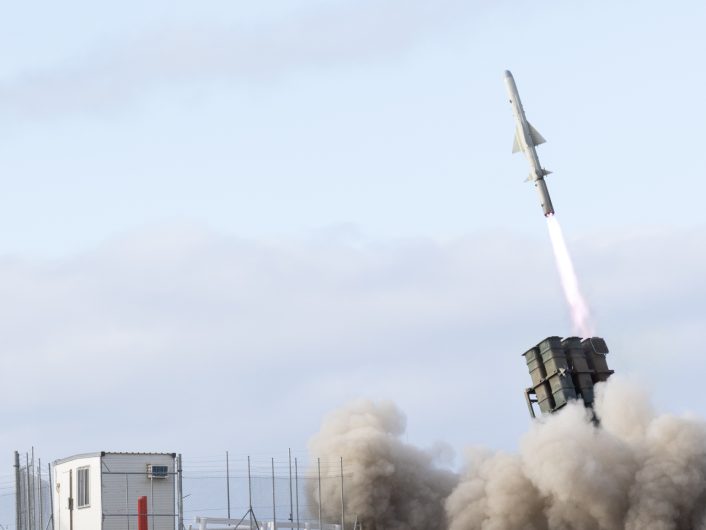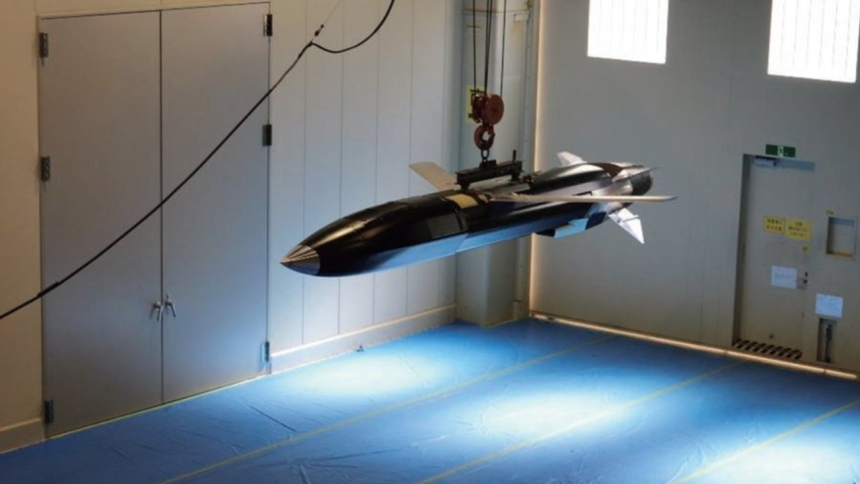Deployment of the upgraded Type-12 SSM will fundamentally reinforce Japan’s stand-off defense ability to respond to attacks from outside the threat zone.
Japan unveiled the photo of the prototype of the Type 12 SSM (Surface-to-Ship Missile) in its latest annual defense white paper, which also gives an extensive overview of the other defense programs and military concepts currently pursued by Tokyo. The missile seems to be influenced in general design orientation by the Storm Shadow/SCALP-EG, the JSM (Joint Strike Missile) and AGM-158 JASSM.
Its revelation is consistent with Japan’s previous announcement to develop an advanced anti-ship missile based on the original Type 12 AShM. The Japanese government gave the MoD (Ministry of Defense) $235 million in its 2023 budget for the project.
Japan has also advanced the timeline to deploy the Tomahawk missiles from the US from FY2026 to 2025, according to the document. Another interesting project is the development of a “multipurpose” missile, with interchangeable warheads and modular architecture to install new guidance systems to serve attack, reconnaissance radar jamming purposes. The government recently approved the acquisition of AGM-158B JASSM-ER for the JASDF (Japan Air Self-Defense Force) F-15Js as well.
P1 is Upgraded Type 12 SSM that withstood various tests on the ground (Prototype)【Courtesy of Mitsubishi Heavy Industries, Ltd.】https://t.co/OfVj3Ch9gU pic.twitter.com/yaOGdnQZII
— 笑脸男人 (@lfx160219) July 12, 2024
Lastly, Japan also recently published the video of the test-firing of its HGV (Hypersonic Glide Vehicle), which was conducted in California on Mar. 23, 2024. These acquisitions and developments are part of “counterstrike” capabilities Japan aims to possess amid a deteriorating security situation with China and North Korea.
Upgraded Type-12 SSM
The photo, credited to the developer Mitsubishi Heavy Industries, was accompanied by a caption saying the “upgraded Type-12 SSM have stood various trials on the ground.” These can be assumed to be at least wind tunnel testing to verify the aerodynamics and the engineering involving the assemblies of the wing and control surfaces.
The missile appears to have an air-breathing engine, with the intake visible at the bottom fuselage towards the tail end. The tail fins are in an x-shaped configuration, positioned behind the casing for the weapon’s folding wings.

Some assessments mentioned that Japan plans to eventually take the upgraded Type-12’s range to 1,200 km. The shape of the missile has also been modified to reduce the radar cross section (RCS) and make it stealthy.
“Japan will fundamentally reinforce its stand-off defense capabilities to respond from outside the threat zone, including anti-aircraft missiles, against naval vessels and landing forces that invade Japan, including its remote islands,” the paper said. “Deployment of the Upgraded Type-12 SSM and acquisition of U.S.-made Tomahawks will be accelerated by one year, starting in 2025, to promptly secure sufficient capabilities.”
Current Type-12 AShM
In July 2023, Japan test-fired the older version of the Type-12 from Australian territory during the Talisman Sabre military exercise. Fired from a truck-mounted system at Beecroft Weapons range in New South Wales, the missile, which did not include explosive warhead, was fired at an unmanned target in the East Australia Exercise Area, off the coast of Jervis Bay.
On Mar. 21, 2024, Japan deployed a battery of the original Type-12 on Okinawa’s main island and on Mar. 30, held a ceremony to mark the occasion. A successor to the Type-88, the Type 12 has a range of between 200 to 400 km, with the upgraded Type-12 planned to reach up to 1,000 km.
#西部方面隊 は、3月30日勝連分屯地(沖縄県うるま市) において、3月21日に編成完結した #第7地対艦ミサイル連隊 の編成完結報告及び隊旗授与式を行いました。
第7地対艦ミサイル連隊の新編で、南西における 抑止力・対処力が強化されました。#陸上自衛隊 #防衛力の抜本的強化 #新改編 @ModJapan_jp pic.twitter.com/1rxhPya0oV
— 陸上自衛隊西部方面隊 (@JGSDF_WA_pr) March 30, 2024
Other SSM units have also been positioned on the Miyako and Ishigaki islands in Okinawa Prefecture, as well as Amami-Oshima Island in Kagoshima Prefecture. This is the first deployment of a surface-to-surface missile unit on Okinawa’s main island.









